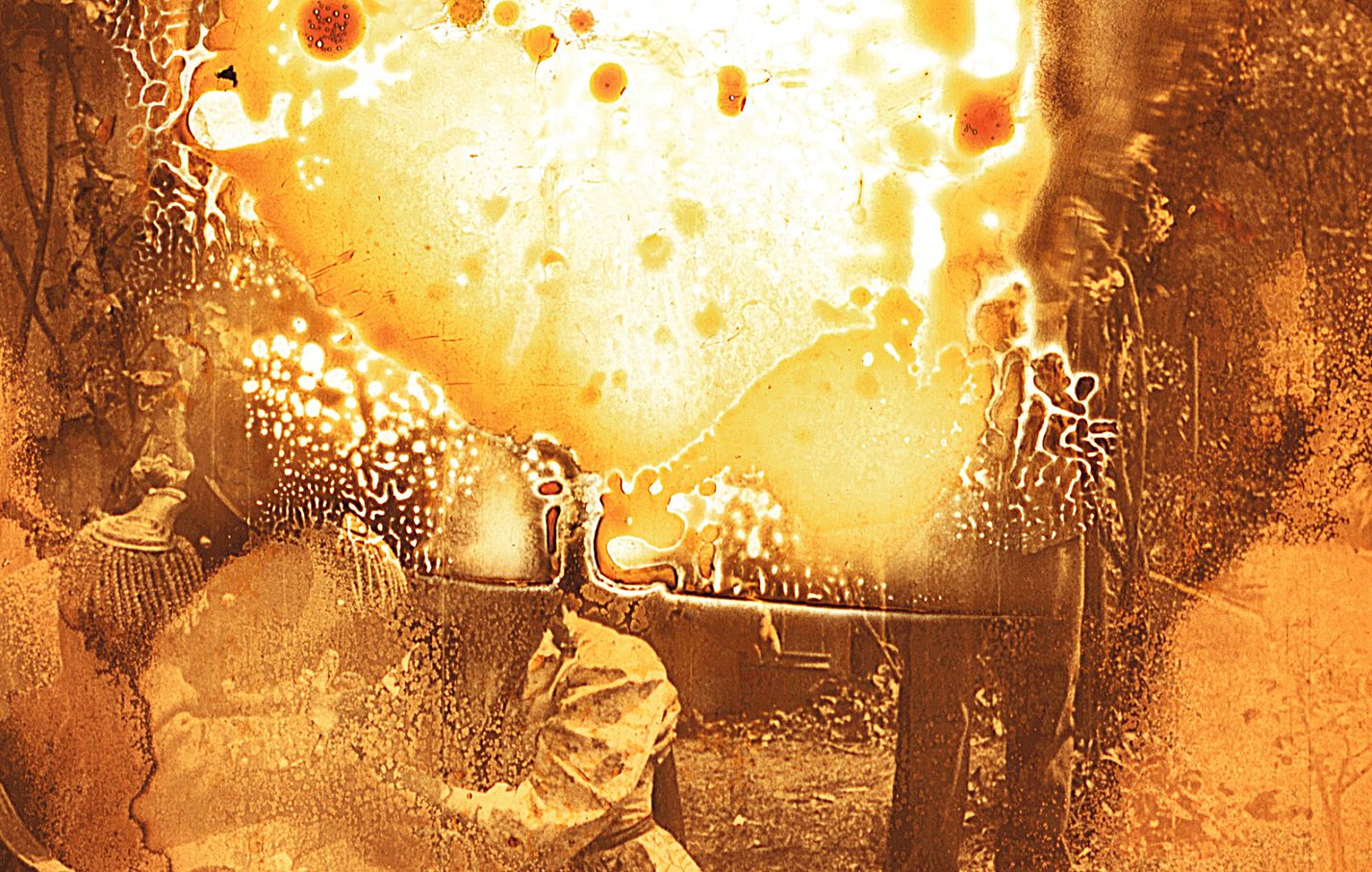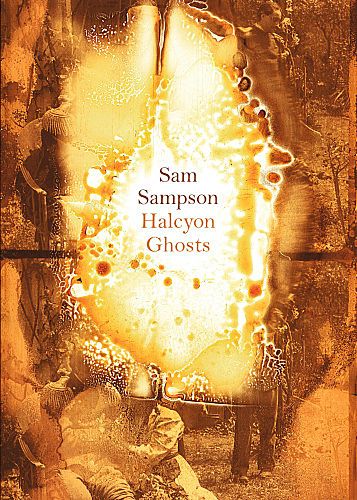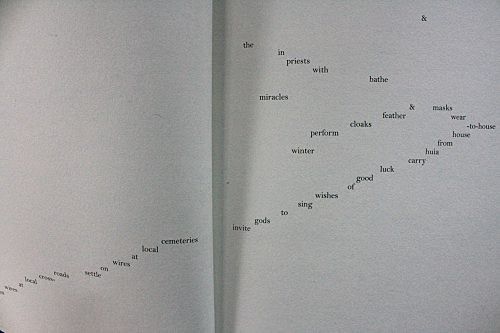Review: Halcyon Ghosts
Sam Sampson's Halcyon Ghosts rushes between the microscopic and the celestial, at a scale and breadth that delights.
Halcyon Ghosts is an ambitious piece of work. It’s a collection that rushes between the microscopic and the celestial, zooming in and out of normalcy and immediacy. Gentle historical nostalgia sits alongside hard-edged scientific theory, miniaturised epic topographies and heightened everyday ritual.
On first look, the title suggests a sort of tranquillity. We picture ghosts at rest, ‘halcyon’ as meaning calm and peaceful. But as we delve into the title poem, with its images of hypnotic ritual and feeding mice to kingfishers, we get a new sense of halcyon ghosts: as mythical kingfisher gods, presiding over crossroads and cemeteries. I can’t help but be reminded of Graham Greene’s invocation of Baron Samedi and the other local Haitian deities in his novel The Comedians. There’s a similar uneasiness; things underneath the surface, or underneath multiple layers, pending discovery, ready to be whipped into poetic frenzy, to foment collisions beneath the moon. Images of birds in flight are imbued with new resonance as Sampson decorates his halcyon ghosts with “coloured embroideries”, “masks & feather cloaks” and “songs of ecology”. These are avian tohunga who “bathe with priests in the Ganges”.
There’s an intriguing accumulation of layers, on a number of levels. The layering of poetic voices is done intentionally but subtly; a dozen or so different authors are skilfully woven into Sampson’s lyrical world without giving the impression of self-conscious collage. There are echoes of John Cage’s playful mesostics and John Donne’s weighty metaphysics, Wallace Stevens’ blackbirds and James Joyce’s opacity, but the selections and reworkings are tactful and seldom edge too close to caricature.
The layering of the text with photographic images in the title poem is particularly satisfying, and I quite happily would have read a whole collection centred around this one kind of poetic shape. Large groups of birds over a double-page spread are echoed in words strung out in flying formations. They hang loosely but beautifully, swerving and flowing as a flock.
[caption id="attachment_9689" align="aligncenter" width="500"] From Halcyon Ghosts[/caption]
[caption id="attachment_9688" align="aligncenter" width="500"] Pages 12-13 from Halcyon Ghosts (edges of pages obscured, including the word “Ganges” on page 13)[/caption]
Along with the birds of the title, a number of other tropes return with increasing resonance throughout the collection. The moon, as witness to “electrical improvisations” and meetings in the gardenias, takes on a ritual significance. Musical instruments are weighted with mortality: a bone-flute, a box of matches.
The geographical, too is multi-layered, overlaid with images of tactile intimacy. Red sutures thread the Alaska Range. The moons of Mars are illuminated via webcam. Images of the sky and its celestial bodies are shot from different angles, reworked and brought inside the intimate textures of these poems. At his best, Sampson blends the visual geography with the aural geography, the peaks and furrows of his words. Here the liquid flow of childhood memory is abruptly calcified in a tight cluster of consonants, a literal sticking point.
. Watch Charlie Chaplin un-
. wind
. listen in-
tently to that blind
. mazy course
. running wild
through all forms of mim-
. icry, fun-making and clog-dancing
childhood imbroglio
old-school sheet music
. where landscapes are raised
. used stamps stick
The large-scale geography absorbs the intensity, the stickiness of the close-up. Here old paraphernalia, “used stamps” – memories, recycled words, archaic instruments and contraptions – are fertile ground for the poetic wanderer. Throughout the collection there’s an appealing richness created through this multi-layered approach, bringing together art, ritual and ecology, allowing marginal worlds to intrude on each other.
In the first poem of the collection – ‘The Kid’, quoted above - Sampson describes a “blind mazy course running wild”. These poems are at their most compelling when they let loose, when they follow a blind course and trace the images they come upon. However for me the collection too often gets stuck in language trimmed of all fat, crafted to the point of curtness:
. colour flushed from face, comical and lost
. tears stood in eyes, moment arranging belief
blink, and all that sleep: black: awake,
fragile figure; for, though
. frozen, sound rightfully unearths
. meaning, a watchful mind, mouth becomes page
Long-ish stretches of the work maintain a relentlessly earnest tone, verging on didactic, with no loose verse or clichés to cling to. Some of this has to do with the technique of construction. The collage of Sampson’s poetic ancestors throws up a glut of language, much of it delightfully strange: a cymbiform moon, the word “kettle” as a verb, riparian light. But it also creates a rather tight, brittle assemblage in places, especially where it resembles clues of a cryptic crossword strung together, or modernist re-interpretations of the fortune cookie. Sampson’s choice to democratise the text with “overlapping scraps” makes for a fascinating, if sometimes bewildering ride.
But every so often a brilliant image or juxtaposition pokes through that recalls the childlike wonder of ‘The Kid’ and ‘Halcyon Ghosts’. At the end of ‘A Strange Harvest … A’ Sampson again inverts scale and perspective in a surprising way; the surrealist bent is never far from the surface.
a train running eastwards: four trains in each direction
yesteryear the omnibus carried the byway
time rents a moving truck
on the horizon a cowboy props up his horse.
If the tone at times feels terse, cropped, too-perfect, the scale and breadth of the collection more than make up for that. This is the world as if observed from the eye of the bird, at a roving, frenetic pace that never holds focus for long. The reader is spoilt for riches of language, immersed in the night skirmishes of moonlit ghost moths and prayers for the extinct huia. The fragmentary nature of the collection can be trying but I’m certain that multiple readings will yield abundant rewards.
Halcyon Ghosts
Sam Sampson
AUP, $24.99




